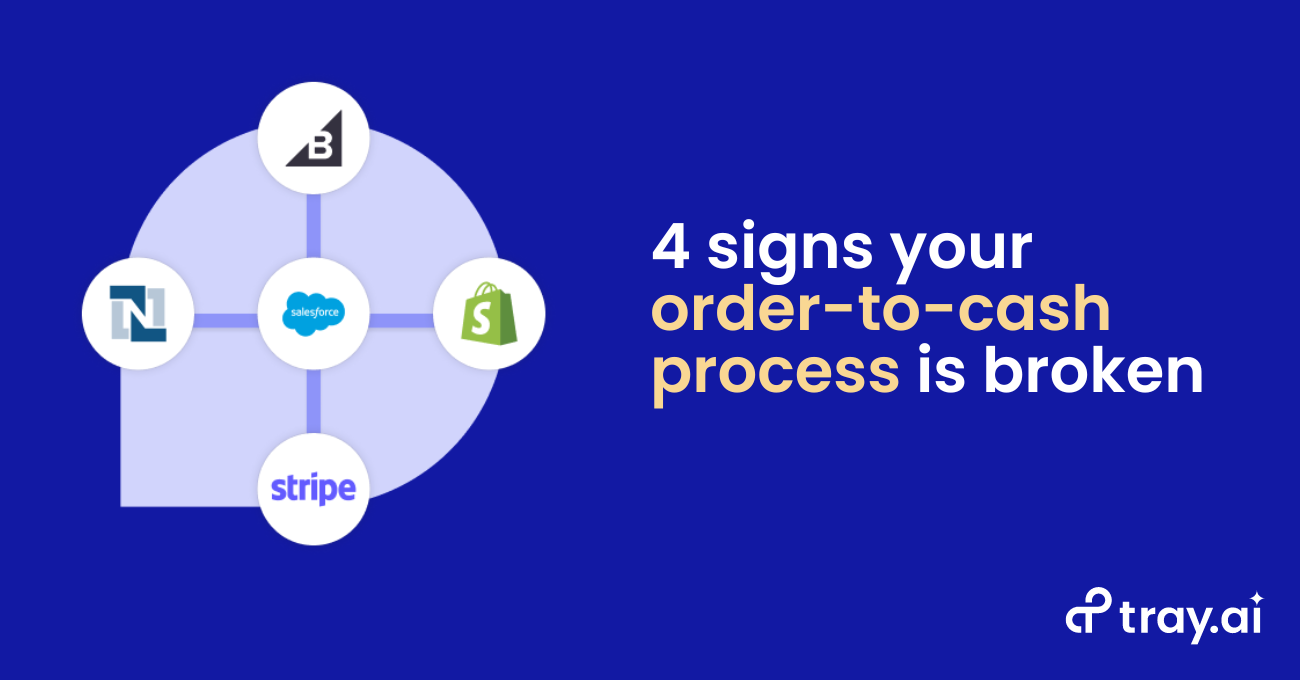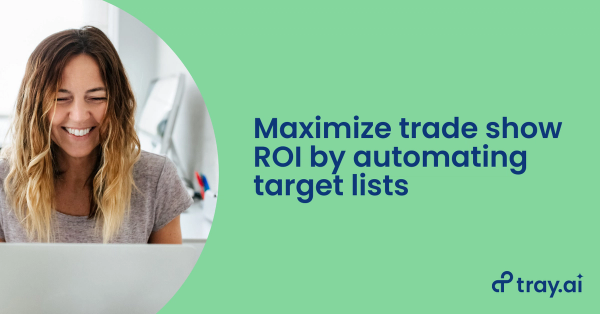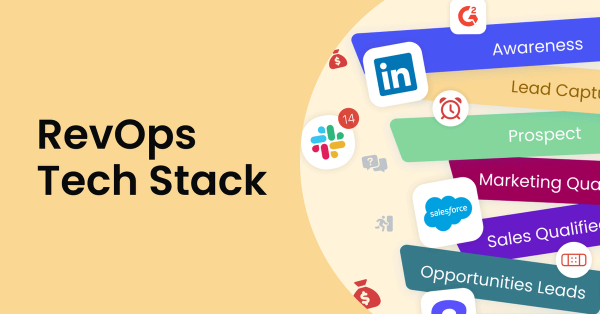CFOs and finance teams have one thing on their minds: a steady cash flow is critical for weathering any economic headwinds on the horizon. For many organizations, evaluating and optimizing their current order-to-cash (O2C) process is the first, and best, course of action to take to achieve this goal.
Order-to-cash refers to the series of interconnected steps, starting from the moment an order is placed to the point where payment is received, applied to accounts receivable, and revenue is recognized. It’s a complex process spanning different applications and departments that requires efficient coordination and integration to ensure smooth and accurate execution. From verifying customer orders to managing inventory, invoicing, and ultimately, collecting payment, each stage of the O2C process plays a vital role in the financial health of your business.
However, many finance teams struggle with broken O2C processes that hinder efficiency, decrease customer satisfaction, and lead to revenue leakages. Identifying and addressing these problem areas can have a significant impact on revenue, fortifying your organization’s financial health. But what are the signs your O2C process is broken?
Sign #1: Finance teams are overwhelmed with manual work
It’s a glaring red flag when your finance team is continuously bogged down by manual tasks, signaling an inefficient O2C process. 70% of finance teams spend roughly 10 hours per week (or a staggering 520 hours annually) on manual processes that could be automated, such as invoice processing, tracking overdue accounts, and payment reconciliations.
Not only does this manual drudgery escalate the risk of errors and curtail overall efficiency, impacting customer satisfaction, but it also opens the floodgates to revenue leakages through overlooked errors in orders and payments. And then there’s another overlooked aspect: opportunity cost. When manual work eats up your finance team’s time, they are pulled away from strategic initiatives and growth-enhancing opportunities, which translates to missed chances for increased revenue and business competitiveness.
Sign #2: Lackluster integrations have finance teams boxed in
When the various systems within your O2C cycle operate in isolation, it creates a fragmented process that lacks real-time revenue visibility and efficient data flow. Achieving a steady cash flow starts with having a stable data flow between your revenue systems, such as your CRM, ERP, and billing platform.
While these applications typically offer native, boilerplate integrations, they are often static, and fail to meet the needs of a growing business, resulting in limited flexibility and compromised data accuracy. To avoid getting boxed in by the lackluster functionality of out-of-the-box integrations, finance teams must rely on IT to create manual workarounds, which could take months.
Sign #3: Lengthy approval processes bottleneck cash flow
77% of buyers claim their last purchase was overly complex and difficult. They expect a streamlined buying experience, but cumbersome approval processes hinder sales cycles, limit upselling opportunities, and frustrate customers.
Delays in obtaining approvals not only impact revenue potential but also create bottlenecks in the overall order flow. When speed and efficiency are paramount, a lengthy approval process can limit business growth and dampen customer satisfaction.
Sign #4: Security and compliance challenges leave the door open for risks and penalties
Maintaining data security and complying with strict regulations are critical for any process involving sensitive customer, payment, and invoicing data. However, complex and manual O2C processes make it challenging to adhere to security protocols and compliance requirements.
Finance teams risk non-compliance and potential data breaches which not only lead to financial penalties but also damage brand reputation. Security and compliance issues require a robust and secure automation solution to ensure data protection, regulatory adherence, and customer trust.
End-to-end O2C automation for fast, accurate cash flow
Recognizing the signs of a broken O2C process is the first step toward optimization. Manual data entry, lack of integration, lengthy approval processes, and security/compliance issues all contribute to revenue leakages, decreased customer satisfaction, and increased operational costs.
Addressing these challenges starts with taking a holistic approach to O2C automation. Tray’s end-to-end O2C automation solution lets organizations transform and extend their O2C process to maximize revenue and free up their finance team to focus on more impactful projects. Here’s how:
Eliminates manual efforts through end-to-end automation.
Tray lets finance teams completely automate processes such as invoice generation, approval and contract management, and more. Beyond the traditional O2C cycle, finance teams can leverage Tray’s low-code visual builder to automate processes around renewals and upsells, such as personalized follow-ups and reminders, automatic invoicing, and more.
To further drive efficiency in the O2C process, finance and operations teams can leverage Tray's standardized plug-and-play templates:
- Salesforce Account to NetSuite Customer': Create/update NetSuite customers every time a Salesforce account is created/updated.
- 'Salesforce Opportunity Closed Won to NetSuite Sales Order': Transform 'Closed Won' opportunities in Salesforce into corresponding sales orders in NetSuite.
- 'NetSuite Invoice to Salesforce Invoice': Sync NetSuite invoice information back to the originating Salesforce opportunity daily.
- 'NetSuite Payment to Salesforce Payment': Align NetSuite payment information with the corresponding Salesforce opportunity daily.
Integrates revenue systems seamlessly
With 600+ connectors available out-of-the-box including the most widely used revenue systems like Salesforce, NetSuite, Oracle, Shopify, and more, finance teams never have to worry about relying on IT to set up and maintain integrations. Tray’s flexible platform provides finance teams with the ability to customize their integrations and workflows to their specific needs.
Delivers a frictionless buying experience for customers
With order-to-cash automation, finance teams can deliver customers a seamless and hassle-free buying experience. With Tray, you can route relevant opportunities to the appropriate stakeholders for approval through your preferred communication channels like email, Slack, or Teams. Automating the approval process for contracts and sales discounts with Tray’s low-code platform ensures a swift and efficient experience that delights customers.
Bolsters security and ensures compliance
Finance teams know the importance of security and compliance, especially when it comes to handling sensitive payment data. As a SOC 2 Type 2 certified platform, we invest heavily in staying up-to-date with the latest security practices. Our procedures include minimal data storage, encrypted data transmission, advanced monitoring, and strong access controls. And with documented incident response plans and rapid deployment capabilities, we ensure a secure environment for your order-to-cash automation needs.
To learn more about how Tray’s order-to-cash automation solution can eliminate manual work, improve the customer experience, accelerate cash flow, and maximize upsell opportunities, check out our guide to order-to-cash automation.




